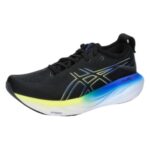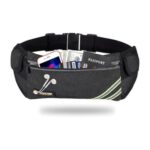Table of Contents
Introduction to Compression Wear vs. Regular Attire
When it comes to choosing between compression wear and regular attire for running, understanding the key differences can help you make an informed decision. Compression wear is specifically designed to provide targeted support and improve circulation during physical activity. The snug fit of compression garments can enhance muscle oxygenation and reduce muscle vibration, leading to improved performance and faster recovery post-workout.
On the other hand, regular running attire offers more flexibility in terms of style and comfort but may not provide the same level of support as compression wear. It is important to consider your personal fitness goals and preferences when deciding between the two options. Some athletes find that incorporating both compression wear and regular attire into their training regimen can optimize performance and overall comfort during exercise routines. Ultimately, experimenting with different apparel choices can help you determine what works best for your individual needs as a runner.
Benefits of Compression Wear:
1. Increased Circulation and Recovery
Increased circulation and faster recovery are two crucial factors that can significantly impact an athlete’s performance. Compression wear has been shown to improve blood flow and circulation, resulting in more oxygen and nutrients reaching the muscles during physical activity. This increased circulation can help reduce muscle fatigue, enhance overall endurance, and potentially lead to quicker recovery post-exercise.
Moreover, by providing targeted support to specific muscle groups, compression wear aids in reducing muscle vibration and damage during high-impact activities like running. This support not only contributes to improved performance but also minimizes the risk of injuries. For athletes looking to optimize their training sessions and maximize their potential, incorporating compression wear into their workout attire could be a game-changer in achieving peak performance levels while prioritizing recovery for future challenges on the track or field.
2. Improved Muscle Support and Efficiency
Improved muscle support and efficiency are key benefits of wearing compression wear during physical activities like running. The compressive nature of these garments helps to stabilize muscles, reducing vibration and fatigue. This increased stability can lead to improved performance by allowing muscles to work more efficiently, generating more power with each stride.
Furthermore, the enhanced blood circulation facilitated by compression wear can also contribute to better muscle oxygenation and quicker recovery post-exercise. This means that not only will you perform better during your run, but you may also experience less soreness and be able to get back on the track faster for your next session. Overall, the combination of muscle support and improved efficiency offered by compression wear makes it a compelling choice for serious athletes looking to elevate their performance levels.
Benefits of Regular Running Attire:
1. Breathability and Comfort
When it comes to choosing between compression wear and regular running attire for performance benefits, one key factor to consider is breathability and comfort. Compression wear is often praised for its ability to provide a snug fit that supports muscle recovery and blood circulation. However, the tightness of compression garments can sometimes compromise breathability, leading to increased sweat accumulation and potential discomfort during long runs.
On the other hand, regular running attire offers more breathability due to its lightweight and breathable fabrics. This allows for better air circulation and moisture-wicking properties, keeping you cool and comfortable during intense workouts. Finding the right balance between compression support and breathable comfort is essential in maximizing performance benefits while minimizing any potential discomfort or restriction of movement. Ultimately, the choice between compression wear and regular running attire should be based on individual preferences, body type, and specific fitness goals.
2. Range of Motion and Flexibility
When it comes to enhancing athletic performance and preventing injuries, understanding the importance of range of motion and flexibility is crucial. Range of motion refers to the full movement potential of a joint, while flexibility focuses on the lengthening and stretching capacity of muscles surrounding that joint. These aspects play a significant role in optimizing physical performance during activities like running.
Having good range of motion and flexibility can improve running efficiency by allowing for more fluid movements and reducing energy expenditure. It also helps prevent muscle strains, tears, and other common running-related injuries. Incorporating regular stretching exercises into your routine can significantly enhance your overall performance by promoting better joint mobility and muscle elasticity.
Moreover, focusing on improving range of motion and flexibility can lead to better body alignment, which contributes to more efficient biomechanics while running. Consistently working on these areas not only benefits your athletic performance but also aids in injury prevention and long-term health maintenance. Prioritizing these aspects alongside choosing appropriate attire can help you achieve peak performance levels during your runs.
Factors to Consider:
1. Type of Activity and Intensity Level
When considering whether to wear compression wear or regular running attire for optimal performance benefits, one crucial factor to take into account is the type of activity and its intensity level. Different types of activities may have varying requirements in terms of muscle support and blood circulation. For high-intensity activities such as sprinting or interval training, compression wear can provide additional support to muscles, reduce muscle vibration, and enhance overall performance.
On the other hand, for lower intensity activities like walking or light jogging, regular running attire may be sufficient to meet the needs of the body without feeling restricted by compression garments. It is important to match the type of activity with the appropriate level of compression for optimal comfort and performance. By understanding how different activities impact our bodies, we can make better decisions on whether to opt for compression wear or stick with regular running attire based on our individual athletic needs and preferences.
Considering the intensity level of each activity can help us determine whether compression wear or regular running attire is more suitable for maximizing performance benefits. By being mindful of how our body responds to different levels of exertion during various activities, we can tailor our clothing choices to support our muscles effectively without compromising flexibility or comfort. Ultimately, choosing between compression wear and regular running attire should be guided by factors such as activity type and intensity level in order to optimize performance outcomes while enhancing overall athletic experience.
2. Personal Preferences and Body Type
When it comes to deciding between compression wear and regular running attire for performance benefits, personal preferences and body type play a crucial role in making the right choice. Understanding your body type can help you determine which type of clothing will provide the best support and comfort during your runs. For example, individuals with larger muscle mass might benefit more from compression wear to help improve blood circulation and reduce muscle fatigue.
Additionally, personal preferences such as fabric texture, style, and fit also need to be considered when choosing running attire. Some runners may prefer the snug feel of compression wear while others may find it restricting. It’s important to experiment with different options to see what works best for you based on your unique body shape and comfort level. Ultimately, finding the perfect balance between personal preferences and body type will lead to enhanced performance and overall satisfaction during your runs.
Conclusion: Evaluate Performance Needs to Choose Wisely
In conclusion, the decision between compression wear and regular running attire ultimately comes down to evaluating your performance needs. Consider the specific activities you engage in, the level of support and recovery you require, and your comfort preferences. While compression wear may offer enhanced muscle support and improved circulation, traditional running attire provides a more breathable and lightweight option for certain individuals.
It is crucial to choose wisely based on your unique body dynamics and fitness goals. Experimenting with both types of clothing during training sessions can help you determine which option works best for you in terms of comfort, performance enhancement, and injury prevention. Remember that individual preferences play a significant role in athletic apparel choices, so be open to trying out different options before making a final decision on what suits your needs best.















